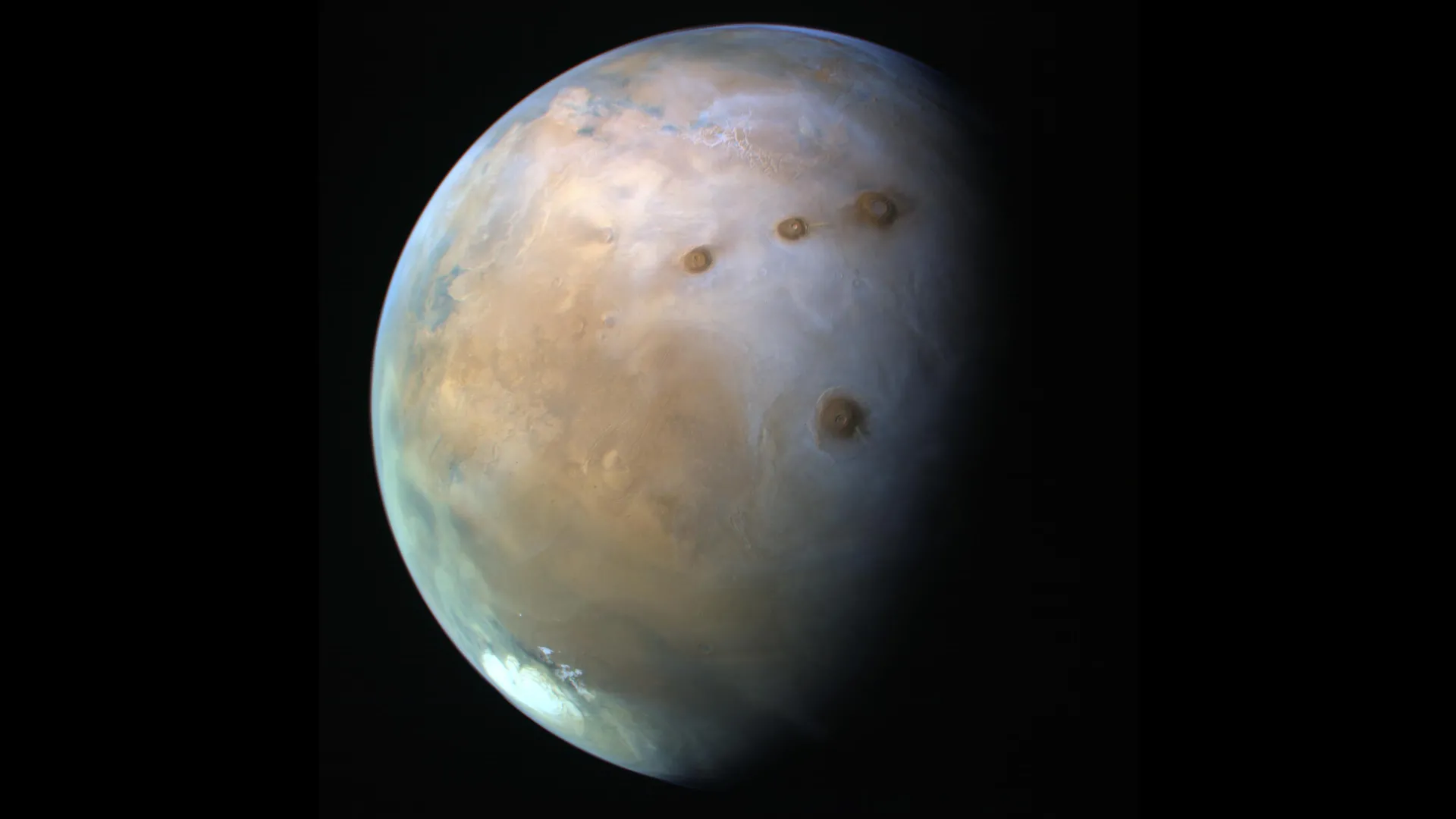Underground life on Mars? Cosmic rays could make it possible
Research challenges long-held assumptions about where life can exist in the solar system.
- Date:
- August 3, 2025
- Source:
- New York University
- Summary:
- Cosmic rays from deep space might be the secret energy source that allows life to exist underground on Mars and icy moons like Enceladus and Europa. New research reveals that when these rays interact with water or ice below the surface, they release energy-carrying electrons that could feed microscopic life, a process known as radiolysis. This breakthrough suggests that life doesn't need sunlight or heat, just some buried water and radiation.
- Share:

A new study from NYU Abu Dhabi has found that high-energy particles from space, known as cosmic rays, could create the energy needed to support life underground on planets and moons in our solar system.
The research shows that cosmic rays may not only be harmless in certain environments but could actually help microscopic life survive. These findings challenge the traditional view that life can only exist near sunlight or volcanic heat. Published in the International Journal of Astrobiology, the study is led by the Principal Investigator of the Space Exploration Laboratory at NYUAD's Center for Astrophysics and Space Science (CASS), Dimitra Atri.
The team focused on what happens when cosmic rays hit water or ice underground. The impact breaks water molecules apart and releases tiny particles called electrons. Some bacteria on Earth can use these electrons for energy, similar to how plants use sunlight. This process is called radiolysis, and it can power life even in dark, cold environments with no sunlight.
Using computer simulations, the researchers studied how much energy this process could produce on Mars and on the icy moons of Jupiter and Saturn. These moons, which are covered in thick layers of ice, are believed to have water hidden below their surfaces. The study found that Saturn's icy moon Enceladus had the most potential to support life in this way, followed by Mars, and then Jupiter's moon Europa.
"This discovery changes the way we think about where life might exist," said Atri. "Instead of looking only for warm planets with sunlight, we can now consider places that are cold and dark, as long as they have some water beneath the surface and are exposed to cosmic rays. Life might be able to survive in more places than we ever imagined."
The study introduces a new idea called the Radiolytic Habitable Zone. Unlike the traditional "Goldilocks Zone" -- the area around a star where a planet could have liquid water on its surface -- this new zone focuses on places where water exists underground and can be energized by cosmic radiation. Since cosmic rays are found throughout space, this could mean there are many more places in the universe where life could exist.
The findings provide new guidance for future space missions. Instead of only looking for signs of life on the surface, scientists might also explore underground environments on Mars and the icy moons, using tools that can detect chemical energy created by cosmic radiation.
This research opens up exciting new possibilities in the search for life beyond Earth and suggests that even the darkest, coldest places in the solar system could have the right conditions for life to survive.
Story Source:
Materials provided by New York University. Note: Content may be edited for style and length.
Journal Reference:
- Dimitra Atri, Margaret Kamenetskiy, Michael May, Archit Kalra, Aida Castelblanco, Antony Quiñones-Camacho. Estimating the potential of ionizing radiation-induced radiolysis for microbial metabolism on terrestrial planets and satellites with rarefied atmospheres. International Journal of Astrobiology, 2025; 24 DOI: 10.1017/S1473550425100025
Cite This Page: